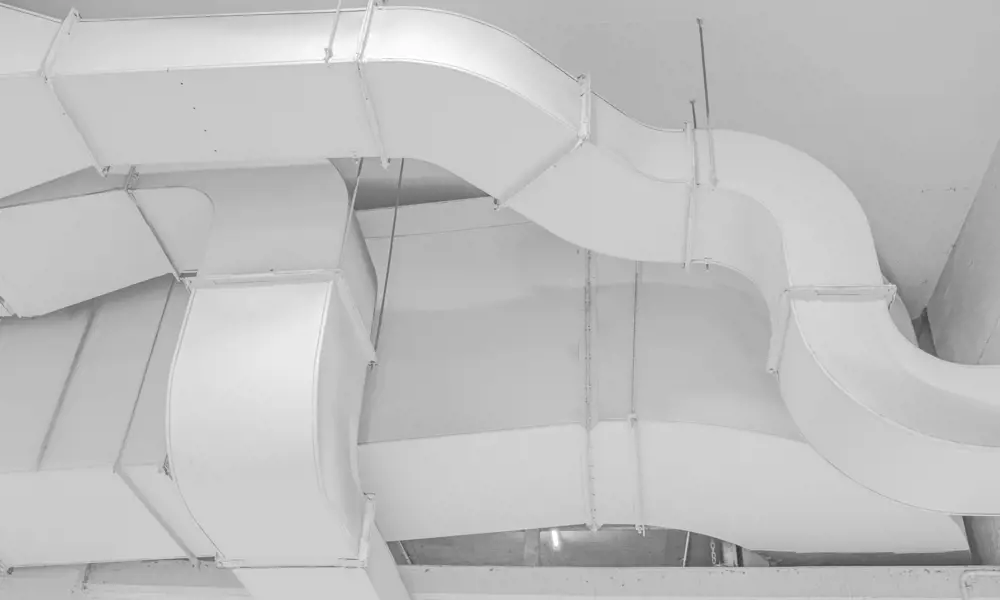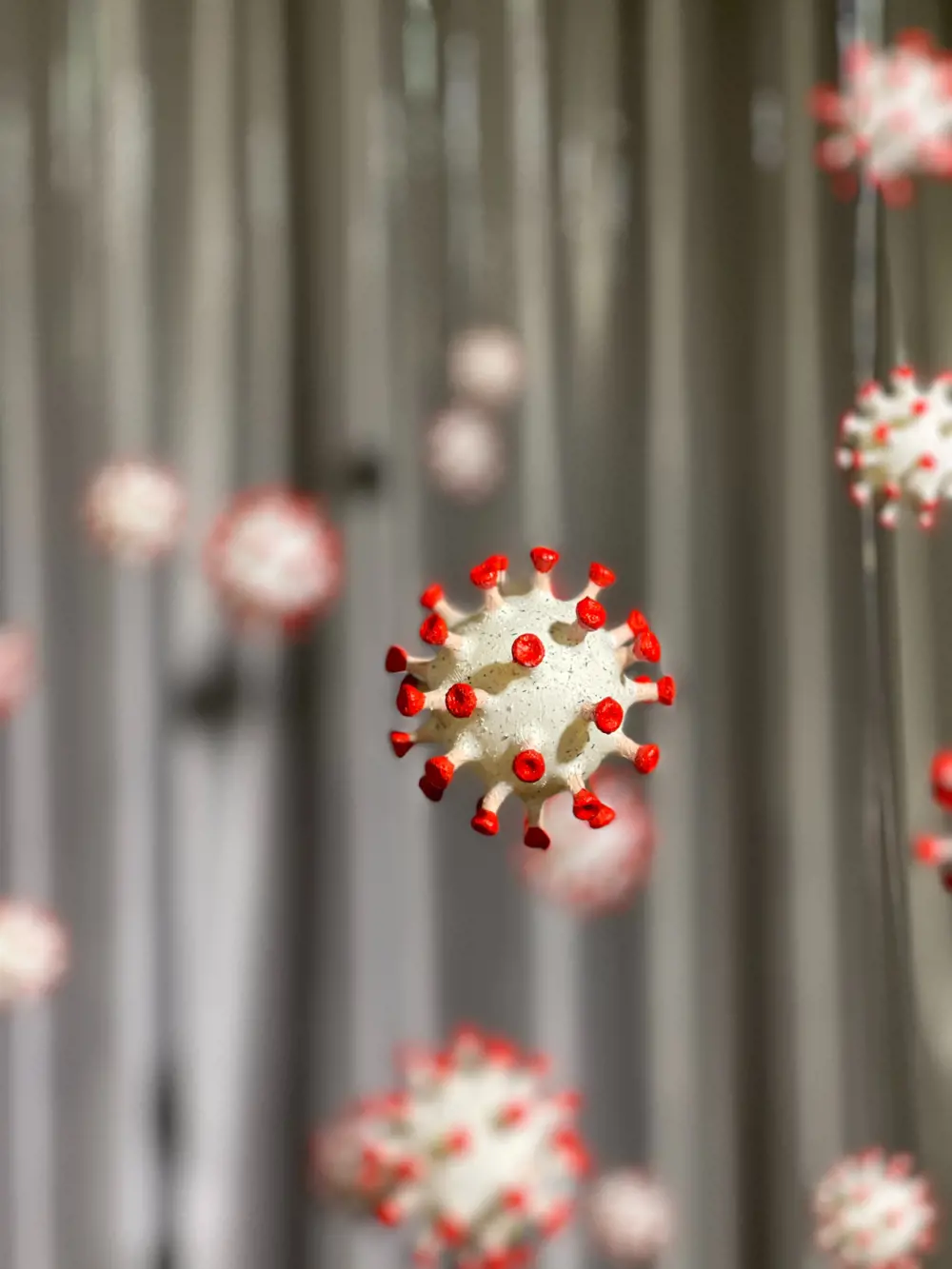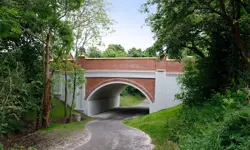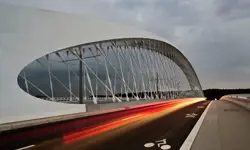
Better buildings need a breath of fresh air
COVID-19 has wreaked havoc on the world in so many devastating ways over the last two years. Importantly, researchers have discovered that ventilation of buildings can effectively reduce the risk of SARS-CoV- 2 virus transmission. In 2021, Sir Patrick Vallance KBE FRS, the government’s Chief Scientific Adviser, commissioned a report from the Royal Academy of Engineering on how to reduce the risk of infection indoors, in which experts say the importance of ventilation is too often “neglected” and there is an “urgent need” to improve it.
The Infection Resilient Environments report recommends that multiple occupancy spaces should be well ventilated to minimise the build-up of virus if infectious persons are present. Additionally, the benefits of a well-ventilated space go beyond helping reduce the risk of SARS-CoV-2 transmission; higher ventilation rates can lead to enhanced levels of concentration, reduced likelihood of mould growth, and reduced risk of transmission of other airborne pathogens. While it is easier to ventilate buildings by opening windows during the spring and summer, there are challenges in delivering the appropriate amount of ventilation in colder weather – especially with a focus on reducing buildings’ energy consumption and keeping warm.

© Quinten Braem / Unsplash
Balancing energy efficiency and infection risk in building design
Heat loss through conduction, uncontrolled air leakage and radiation are the biggest issues engineers face in reducing energy use in buildings. Improving insulation levels helps to reduce the heat lost by conduction through the building fabric. However, action is needed to not only improve panels’ insulation, but also the quality of the areas where they are joined. Additionally, sealing gaps in the building fabric means that when a building is empty, it will not leak out the warm air from the previous day or occupied period. This helps keep the building warm and reduces the need for a heating system to preheat the building before re-occupation. Finally, installing coatings on windows or foil-backed insulation in the attic space can help reduce heat loss by radiation.
Once the building fabric has been upgraded to a good level, when the building is occupied the space can be well ventilated, even in cold weather, without excessive energy use. This is because natural heat gains within the space can often be sufficient to maintain the interior at a comfortable 21°C and provide ventilation without extra heating or a heat recovery scheme, even when the external temperature drops to 5°C. The combined heat gains from IT equipment, lighting, solar, and the occupants themselves are considerable. If the ventilation system is designed to exploit these heat gains by premixing the incoming cold air with warm room air, adequate levels of ventilation can be provided without cold draughts.
Unfortunately, many existing buildings have poorly maintained ventilation systems. For example, if a building has opening windows, not all the windows may in fact work: many windows at lower levels that are easily accessed by occupants are better maintained than those at higher levels. While losing a few opening windows isn’t a problem in the spring or autumn, it can be a problem in winter if they are the top ones.
Cracking open all the high-level windows a small amount provides good levels of ventilation but without cold draughts – the incoming cold fresh air can mix with the air in the space and be warmed before it hits the nearest occupant. This means that radiators should not need to be turned up to alleviate cold draughts. Without the high-level windows, it will be too cold to provide the same level of ventilation directly via low level windows. Occupants will therefore close them, which should be avoided from a health perspective now.
Monitoring of buildings to check whether adequate levels of fresh air are in fact being provided is extremely variable – buildings with controlled ventilation systems and CO2 sensors in occupied spaces can more easily provide appropriate levels of fresh air. Buildings that have people together for extended periods of time that rely on manual openings are more challenging, as was highlighted in a study of an outbreak in a restaurant in Wuhan. For example, can restaurant visitors be assured of the level of fresh air at their table? There are health and safety issues in food preparation in kitchens, but it is a different situation in the public area.
Now that an environment’s air quality and its role in creating safer spaces has been brought into sharper focus, government and professional bodies will need to develop further regulations and guidance and communicate these clearly and consistently. More importantly, architects, engineers, and building owners and operators must ensure these are applied.
Cracking open all the high-level windows a small amount provides good levels of ventilation but without cold draughts – the incoming cold fresh air can mix with the air in the space and be warmed before it hits the nearest occupant.
Meeting net zero goals while enhancing indoor air quality
Engineers must find a balance in winter between reducing the risk of SARS-CoV- 2 transmission to an acceptable level and keeping energy use low. Increased levels of ventilation reduce the risk of transmission, but once these are considered reasonable, the benefits from reducing the risk of transmission decrease for each litre per second per person of outdoor air provided – and energy costs continue to rise. Therefore, our focus should be on addressing buildings that don’t meet current building regulation standards for ventilation as these buildings arguably present the greatest risk for transmission. They are also likely to consume the most energy as a result of poor building fabric and systems. There is a role for different controlled ventilation systems ranging from natural ventilation to full heat recovery schemes. In addition, high efficiency particulate air (HEPA) filters or ultraviolet light (UVC) systems can help reduce infection risks in locations where good ventilation is difficult to achieve. However, the benefits of using other kinds of air cleaning devices are less clear.
The pandemic has revealed flaws in the way in which we design, manage and operate buildings. Unless they are addressed, these could disrupt management of this and future pandemics, impose high financial and health costs on society, and constrain our ability to address other challenges such as climate change. Well-designed and maintained ventilation systems can help overcome the challenges that COVID-19 poses and contribute to the transition to zero-carbon buildings. As the Infection Resilient Environments report notes: “government policy on net zero must be developed in a way that is consistent with priorities around indoor air quality and making buildings resilient to infection.” It is not a choice between COVID-19 resilient and climate-friendly buildings; it is a case of improving buildings to meet both goals.
***
This article has been adapted from "Better buildings need a breath of fresh air", which originally appeared in the print edition of Ingenia 90 (March 2022).
Contributors

Dr Shaun Fitzgerald OBE FREng is Director of Research in the Centre for Climate Repair at the University of Cambridge. His academic research on ventilation led to him founding and leading Breathing Buildings from 2006 to 2018. He is a member of the SAGE Environmental Modelling Group, one of the authors of the Chartered Institution of Building Services Engineers Emerging from Lockdown series, and currently part of the AIRBODS research team.
Keep up-to-date with Ingenia for free
SubscribeRelated content
Civil & structural

Building the Shard
The Shard is one of London's most iconic buildings. The tallest in Western Europe, it was designed by Italian architect Renzo Piano and dominates the city’s skyline. Ingenia spoke to John Parker, project director for structural engineers WSP, who outlined the engineering decisions made in building the enormous steel and glass structure.

FlexiArch
Arch bridges are strong, durable and require little maintenance. However, very few had been built since the early 1900s until the FlexiArch was developed and launched in 2007. Now, there has been a minor renaissance for this ancient form of construction.

Creating user-friendly buildings
For Michelle McDowell, a former Business Woman of the Year, a passion for joined-up design thinking and building information modelling with a user-friendly approach has enabled her to pioneer revolutionary changes in her field.

Troja Bridge
In November 2014, one of the world’s largest network arch bridges was officially opened in Prague. The UK may soon have its first network arch bridge if the go-ahead is given for a new rail project in Manchester.
Other content from Ingenia
Quick read

- Environment & sustainability
- Opinion
A young engineer’s perspective on the good, the bad and the ugly of COP27

- Environment & sustainability
- Issue 95
How do we pay for net zero technologies?
Quick read

- Transport
- Mechanical
- How I got here
Electrifying trains and STEMAZING outreach

- Civil & structural
- Environment & sustainability
- Issue 95